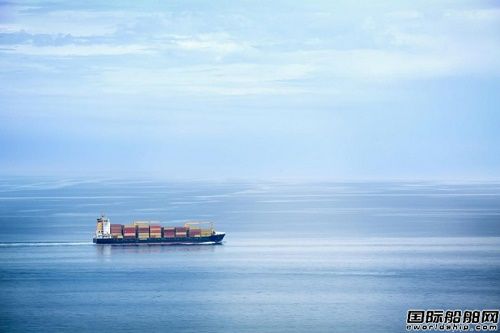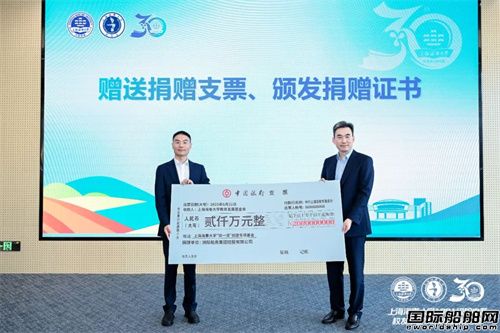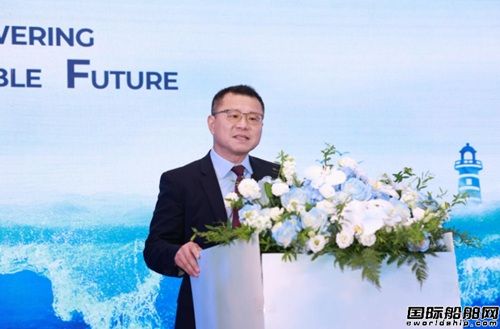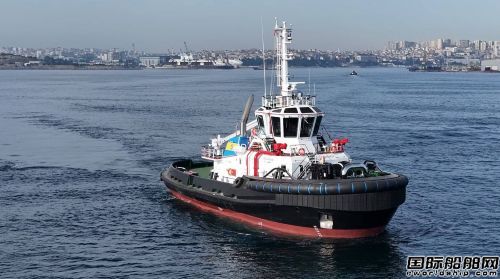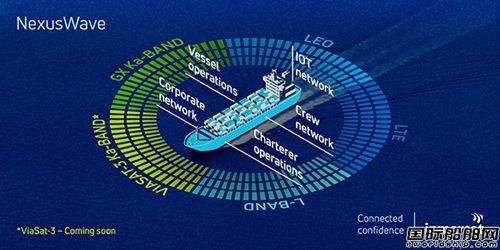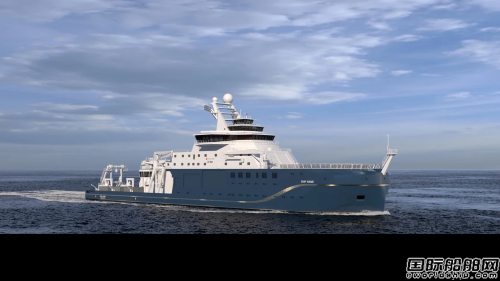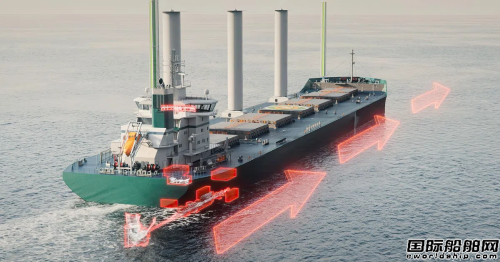根据国际海事组织(IMO)的一项新决议,使用含有全氟辛烷磺酸(PFOS)的含氟泡沫作为发泡成分的泡沫灭火系统将被逐步淘汰。
新规则将于 2026 年开始根据滚动计划生效,但瑞典海事工程专家 Scanunit 认为,现在就应该实施积极的替代战略。
船舶上的泡沫灭火系统通常使用一系列被称为全氟烷基和多氟烷基物质(PFAS)的合成化合物。
由于其非常有用的特性,除消防外,它们还被广泛应用于其他领域,但现在它们的使用正受到质疑,因为它们已被证明是有毒的、生物累积性的和在环境中非常持久的物质。
泡沫系统中常见的 PFAS 化合物是全氟辛烷磺酸(PFOS),但也可能使用其他 PFAS。
由于全氟辛烷磺酸对人类健康的影响,自 2009 年以来,大多数西方国家已根据《斯德哥尔摩公约》对全氟辛烷磺酸进行了限制。
这些限制导致了全氟辛烷磺酸的工业转型和替代品的出现,尽管其中一些替代品是其他全氟辛烷磺酸,但经过更多研究后,这些替代品也可能被认为是有害的。
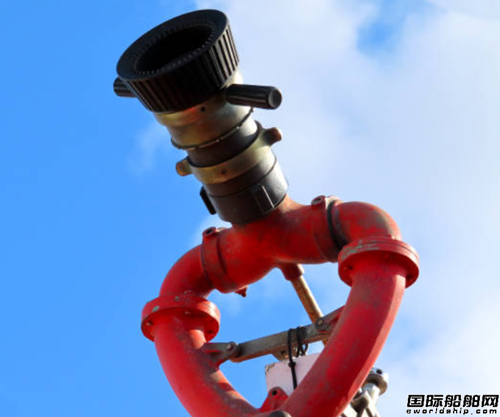
在国际海事组织 SSE 小组委员会开展工作之后,海安会通过了 MSC.530(107) 号决议,对《国际海上人命安全公约》第 II-2 章进行了修订,并通过了 MSC.534(107) 和 MSC.535(107) 号决议,对《海安会准则》(1994 年和 2000 年)进行了修订,禁止使用含有全氟辛烷磺酸的消防泡沫。
该禁令适用于固定式和便携式系统,并于 2026 年 1 月 1 日对新船生效。
现有船舶上的系统需要清除全氟辛烷磺酸,并在 2026 年 1 月 1 日或之后的首次检验日期之前将其安全处置上岸。
除全氟辛烷磺酸外,国际海事组织还在考虑将禁令扩展到其他含氟物质,为此,对《国际海上人命安全公约》和《海安准则》进行了修改,在每个文本中增加了一个新的章节 "灭火介质限制",从而更容易纳入未来对灭火介质的禁止或限制。
"船东需要了解规则变化对现有船舶的影响,并考虑如何最好地遵守即将实施和未来实施的规则,因为有些陷阱是需要避免的",Scanunit 销售总监 Mikael Laszlo 说。
值得注意的是,大多数国家的岸上系统已经过渡到新的化学品。
欧洲的欧洲化学品管理局(ECHA)和美国的环保局(EPA)等监管机构建议,消防泡沫和设备中的 PFAS 含量应限制在百万分之 1(泡沫中)。
航运业很可能会遵循这一路线,因此,由于国际海事组织(IMO)未来可能会禁止使用其他含氟物质,因此从一开始就需要仔细考虑替代品的选择。
泡沫中是否含有全氟辛烷磺酸或全氟辛烷磺酸可能不会立即显现。
泡沫证书或产品安全数据表中应有所提及,但情况并非总是如此。
因此,必须对目前使用的特定发泡剂进行分析,以确定其成分。
MSC.1/Circ.1312 号文件详细介绍的海事组织测试准则可能对消防泡沫浓缩物的操作方面的测试有全面的说明,但没有提及其化学成分。
同样,船级社和测试实验室提供的泡沫浓缩物类型批准证书也同样缺乏启发性。
另一个需要考虑的问题是,制造商已经在改用替代产品,在国际海事组织禁令生效之前,发泡剂的供应总有可能枯竭。
如果出现这种情况,船舶无论如何都必须立即做出改变,而且在改变之前,贸易机会可能会受到限制。
对于受国际海事组织(IMO)规定影响的现有船舶来说,更换发泡剂并不仅仅是清空油箱和换上不含全氟辛烷磺酸的发泡剂那么简单。
为了确保在测试或部署过程中不释放任何限制性物质,整个系统都需要进行去污处理。
Scanunit 与同胞瑞典公司 LifeClean 合作,为船上泡沫的去污和更换提供了交钥匙解决方案。
该过程无需在干船坞内进行,可根据船舶的时间表进行安排。
该过程包括清除旧泡沫,然后在整个系统中重新注入 LifeClean 公司开发的 Sani A 清洗液,该清洗液在系统中停留约四个小时。
然后清空系统,重复上述过程。
然后从软管中取样进行检测,以确保全氟辛烷磺酸的含量达到或低于百万分之 1。
Lifeclean 公司创始人 Ragnar Krefting 解释说,与其他方法相比,该过程非常安全,产生的废水也更少。
重要的是,独立测试表明,储罐和泡沫系统中 99.97% 的全氟辛烷磺酸物质已被清除。
有时,系统可能需要升级,以便与替代的无氟泡沫一起使用,或者因为业主认为这样做比较理想。
Scanunit 可以处理所有必要的安排和文件。
在这种情况下,只需船舶提供当前系统手册的副本,然后就可以设计和采购任何必要的新组件。
这项工作将与船级社共同完成,以确保获得必要的批准。
获得批准后,将在方便的地点和日期进行安装,由 Scanunit 提供材料和人员进行安装。
Scanunit 销售总监 Mikael Laszlo 表示:"我们拥有丰富的经验和能力,可以帮助船东履行 IMO 新规则规定的所有义务。

Time is running out for some Fi-Fi foams
A new IMO resolution will see the phase-out of foam firefighting systems that use fluorinated foams containing perfluoro-octane sulfonic acid (PFOS) as the foam-producing component. The new rules come into effect under a rolling programme beginning in 2026, but Swedish maritime engineering specialist Scanunit believes that a proactive replacement strategy should be put into effect now.
Foam firefighting systems on ships typically make use of a family of synthetic chemical compounds known as perfluoroalkyl and polyfluoroalkyl substances (PFAS). They are used in a variety of applications aside from firefighting because of their very useful properties but their use is now being questioned as they have been shown to be toxic, bio-accumulative, and very persistent substances in the environment.
The common PFAS-compound in foam systems is perfluoro-octane sulfonic acid (PFOS), although other PFASs may also be used. PFOS has been restricted in most Western countries since 2009 under the Stockholm Convention because of its impact on human health. These restrictions have led to an industrial transition and replacement of PFOS, although some of the replacements are other PFASs that may also be considered hazardous after more study.
Following work by the SSE sub-committee at the IMO, the MSC adopted resolutions MSC.530(107) amending SOLAS Chapter II-2 and resolutions MSC.534(107) & MSC.535(107) amending the HSC Codes (1994 and 2000) to prohibit the use of firefighting foams containing PFOS. This ban applies to both fixed and portable systems and comes into effect for new ships on 1 January 2026. Systems on existing ships will need to remove the PFOS and dispose of them safely ashore no later than the first survey date on or after January 1, 2026.
The IMO is also looking at extending the ban to other fluorinated substances, in addition to PFOS, and for this reason, the changes to SOLAS and the HSC Codes have been done by the addition of a new section, “Fire Extinguishing Media Restrictions”, in each text making it easier to include future prohibitions or limitations of extinguishing media.
“Shipowners need to understand the implications of the rule changes for existing ships and to consider how best to comply with the impending and future rules as there are some pitfalls to avoid”,
says Mikael Laszlo, Sales Director, Scanunit.
It should be noted that shore systems in most countries have already transitioned to new chemicals. The requirements of regulatory bodies such as the ECHA in Europe and the EPA in the US suggest that PFAS in fire-fighting foam and equipment be limited to 1 ppm (in the foam). Shipping is likely to follow along this path so with the possibility of a future ban on other fluorinated substances by the IMO, the choice of replacement needs to be carefully considered from the outset.
It may not be immediately apparent as to whether the foam contains PFOS or PFAS. There should be some mention in the foam certificate or product safety data sheets, but this is not always the case. It is, therefore, important to analyze the particular foaming agent currently in use to ascertain its composition.
The IMO guidelines for testing detailed in MSC.1/Circ.1312 may have comprehensive instructions for testing the operational aspect of firefighting foam concentrates but do not contain any mention of their chemical composition. Similarly, the type-approval certificates for foam concentrates supplied by classification societies and testing laboratories are equally unenlightening.
Another point to consider is that manufacturers are already switching to alternative products and there is always a possibility that supplies of foaming agents will dry up before the IMO ban comes into effect. If that happens ships will be required to make an immediate change in any case and perhaps have trading opportunities restricted until this is done.
For existing ships affected by the IMO rules, replacing the foaming agent is not simply a matter of emptying the tank and exchanging the agent with one that does not contain PFOS. To ensure that no restricted substances are released during testing or deployment the whole system will need to be decontaminated.
Scanunit, in partnership with compatriot Swedish company LifeClean, is offering a turnkey solution for decontaminating and replacing the foam onboard vessels. The process need not be done in drydock and can be arranged to suit the vessel’s schedule.
The process involves removing the old foam and then refilling the whole system with Sani A, a cleaning fluid developed by LifeClean, that remains in the system for around four hours. The system is then emptied and the process repeated. A sample is then taken from the hoses and tested to ensure that the level of PFOS is at or below 1 ppm. Ragnar Krefting, Founder, Lifeclean explains that the process is perfectly safe and produces less wastewater than other methods. importantly, independent tests have shown that 99.97% of all PFAS substances in the tanks and foam system have been removed.
Occasionally, a system may need to be upgraded for use with the replacement fluorine-free foam or perhaps because the owner considers this desirable. Scanunit can handle all the arrangements and documentation necessary to do this.
In such cases, it only needs the vessel to provide a copy of the current system manual and it will then design and source any necessary new components. This is done in conjunction with the ship’s classification society to ensure that necessary approvals are granted. After obtaining approval, installation is arranged at a convenient place and date with Scanunit supplying materials and personnel to carry out the fitting.
“We have the experience and ability to help owners meet all their obligations under the new IMO rules and we would urge them to go the extra mile and meet the ECHA/EPA standards now rather than wait or carry on with a time-compromised system, says Mikael Laszlo, Sales Director, Scanunit.
